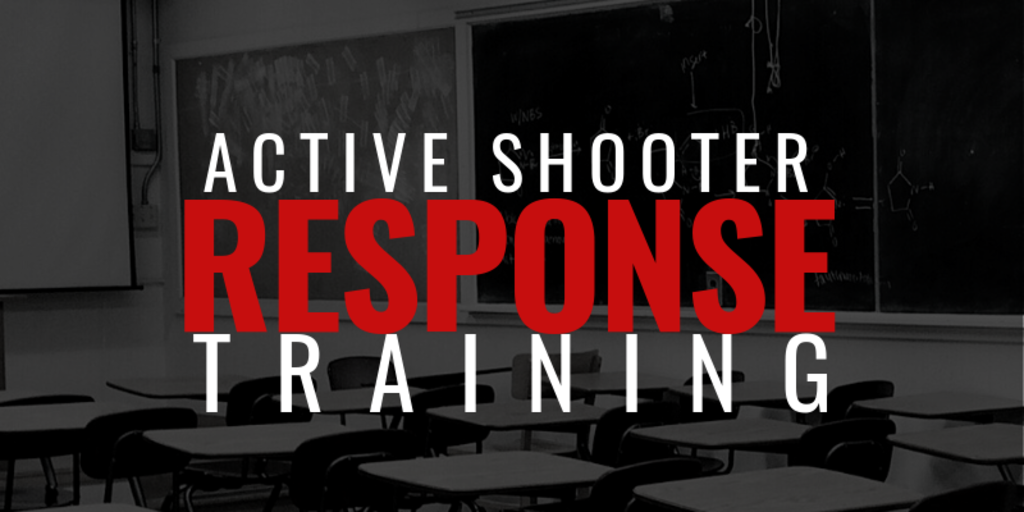The Benefits of Ongoing Active Shooter Training for Area Defense
The Benefits of Ongoing Active Shooter Training for Area Defense
Blog Article
Carrying Out Active Shooter Training: Best Practices for Developing a Safe and Prepared Community Atmosphere
As communities confront the unsettling fact of energetic shooter occurrences, the application of comprehensive training programs becomes crucial. What are the vital aspects that can transform a basic training program into a durable version for neighborhood strength?

Understanding the Requirement for Educating
In an age marked by boosting events of physical violence in public spaces, recognizing the need for energetic shooter training has never been extra important. The prevalence of mass shootings throughout different environmentsâEUR" such as schools, work environments, and purchasing centersâEUR" highlights the necessity for individuals and companies to be gotten ready for such emergencies. Energetic shooter situations can unravel swiftly, leaving little time for individuals to react properly. Consequently, thorough training efforts can furnish participants with the knowledge and abilities to respond emphatically.
Training cultivates a feeling of empowerment and preparedness, allowing people to feel more secure in their surroundings. The advantages of energetic shooter training expand beyond immediate reaction; they include boosting communication procedures and improving overall safety and security measures within organizations.
Secret Components of Effective Programs
Efficient energetic shooter training programs include numerous vital components that enhance preparedness and reaction abilities. Detailed educational program growth is necessary, guaranteeing that training web content is relevant, evidence-based, and customized to the certain needs of the organization or area. This includes recognizing the dynamics of energetic shooter incidents and the mental impact on people involved.
2nd, sensible training situations should be used to replicate potential scenarios, permitting participants to exercise decision-making and action methods in a regulated atmosphere. These drills help with muscle mass memory and build confidence amongst participants.
Third, a concentrate on communication methods is crucial. Developing clear lines of interaction among police, emergency situation responders, and participants ensures worked with feedbacks throughout an event. Normal updates and refresher course programs assist keep interaction pathways clear and effective.
Fourth, ongoing examination and comments systems need to be integrated into the training program - active shooter training. Analyzing the effectiveness of training via individual comments and efficiency metrics permits for continual enhancement
Finally, fostering a culture of safety and security and readiness within the area urges caution and positive procedures, guaranteeing that people are not just qualified yet also involved in preserving a protected atmosphere.
Engaging Neighborhood Stakeholders

To properly involve these stakeholders, it is vital to communicate the purposes and benefits of the training. Hosting informative sessions can help clear up the training's objective, address issues, and describe the duties each stakeholder might play. read the article Producing a stakeholder advisory board can promote continuous dialogue, permitting for varied point of views and understandings to be integrated right into the training program.
Structure connections with area leaders and organizations is also essential. Their assistance can enhance outreach initiatives, boost involvement, and guarantee that training is tailored to the distinct demands of the neighborhood. Furthermore, stakeholders can aid in distributing details and resources, reinforcing the message of safety and security and readiness.
Inevitably, involving area stakeholders not just enhances the training effort however likewise grows a feeling of ownership amongst citizens, leading to an extra resilient and enlightened community with the ability of responding efficiently to prospective dangers.
Training Delivery Methods
Making use of a selection of training shipment methods is vital to accommodate the diverse learning designs and requirements link of participants in energetic shooter training programs (active shooter training). Effective training can take several kinds, consisting of lectures, hands-on simulations, online components, and interactive workshops. Each technique serves an unique objective and can improve the overall understanding experience

On-line components supply flexibility and access, allowing participants to find out at their own speed. These can consist of video clips, quizzes, and discussions to gauge understanding. Interactive workshops motivate seminar and problem-solving, promoting team effort and interaction abilities.
Including a combined approach that integrates these methods not just enriches the training experience but likewise makes certain that individuals are much better prepared to react efficiently in case of an energetic shooter scenario (active shooter training). By dealing with different finding out preferences, organizations can create a much more educated and receptive neighborhood
Continual Assessment and Enhancement
Normal analysis and improvement of energetic shooter training programs are essential to preserving their significance and efficiency. As risks develop, so should the techniques and methodologies employed in training. Continuous evaluation ensures that training content mirrors the most up to date knowledge on energetic shooter occurrences, integrating lessons gained from recent events and adjusting for arising fads.
To promote this procedure, organizations need to develop feedback systems that include individual analyses, professional evaluations, and incident debriefs. Accumulating information on participant efficiency during drills and exercises is essential, as it highlights locations needing enhancement and notifies future training sessions. Furthermore, engaging with police and emergency situation -responders can give beneficial understandings right into the usefulness and applicability of training procedures.
Regularly arranged testimonials of training products and strategies should be mandated, cultivating an environment of technology and flexibility. Organizations has to additionally motivate a culture of ongoing learning, where team member feel empowered to suggest modifications based upon their experiences. By devoting to continual examination and improvement, companies not only boost the effectiveness of their energetic shooter training programs but learn this here now likewise enhance their general dedication to security and readiness within the community.
Conclusion
In conclusion, efficient application of active shooter training necessitates a detailed technique that prioritizes area interaction and reasonable simulations. Inevitably, a dedication to recurring training and enhancement grows a culture of vigilance and preparedness, ensuring a more secure setting for all area participants.
Report this page